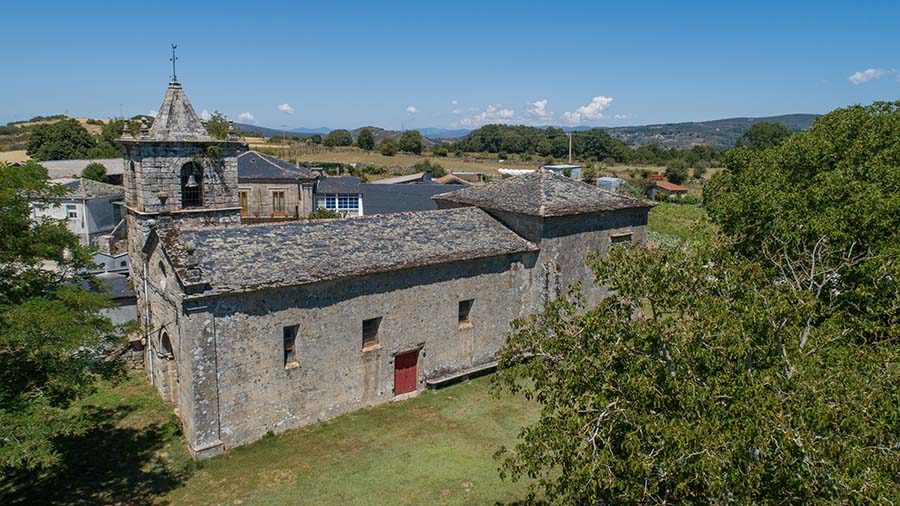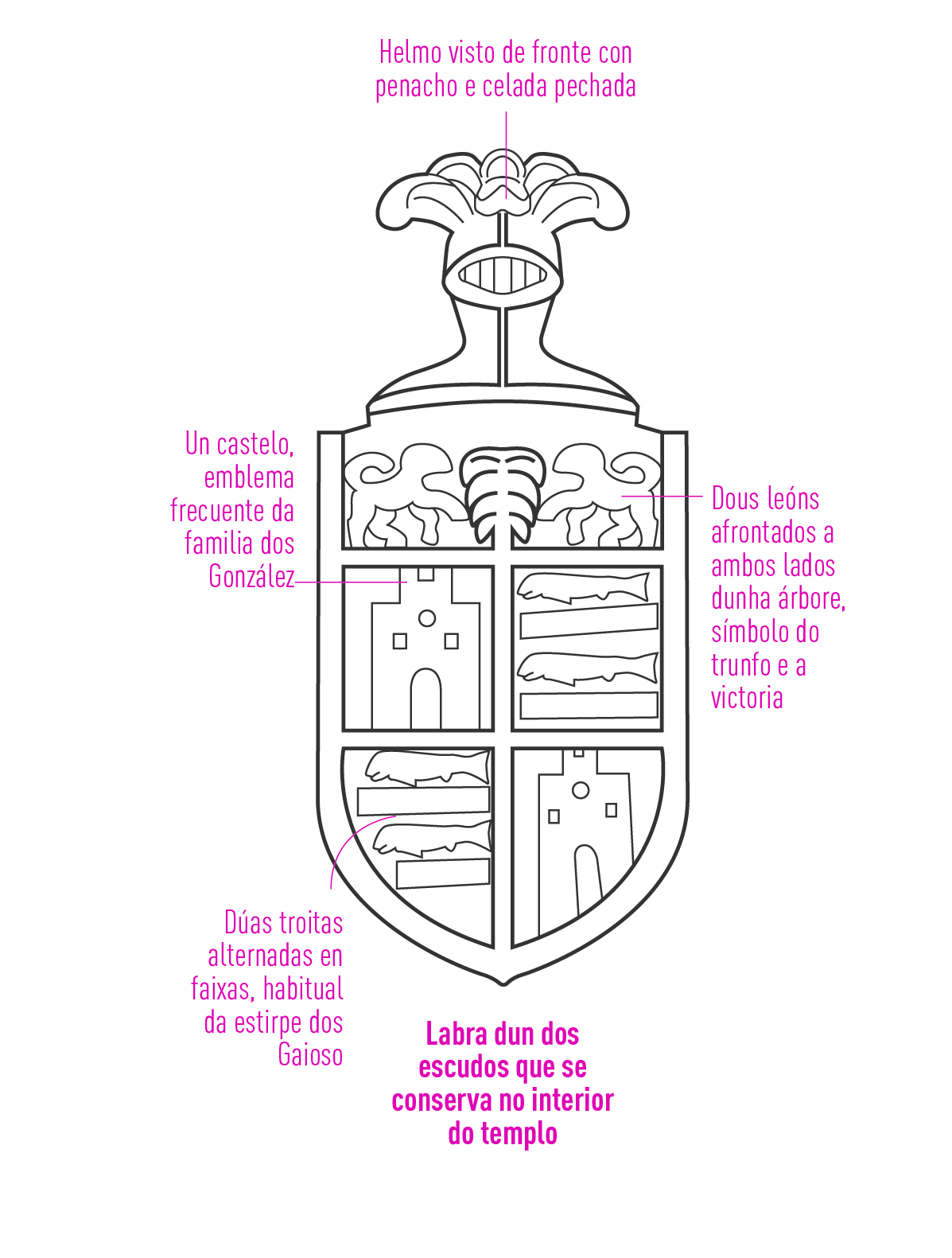
"The church is of good architecture and has a main chapel, whose patronage corresponds to the House of the Amestos which is one of the oldest in the country." This is how Vicente Risco was referring to this temple in 1936. Inside it has two coats of arms carved in granite.
.jpg)
Of Romanesque origin (perhaps from the thirteenth century) the medieval features become visible only on the main door, where a triple archivolt stands out, supported by doorjambs cut in to the edge. The outermost one ends in a frame with three lines of pegs. Above the door is a tracery rosette of modest quality.
The access to the tower, very degraded due to the construction of the cemetery, is possible through a narrow door protected by an arch without semicircular ornaments.
The interior retains a fabulous baroque altarpiece from the mid-eighteenth century divided into three sections by Solomon columns. In the centre stands a seated image of Saint Peter crowned with a tiara.

The temple could have belonged to the monastery of Ecclesiola (medieval form of Grixoa), to which a document from 1075 by King Alfonso VI and his wife Constanza refers, for which several possessions are restored to the Diocese of Astorga, among them “aliud
monasterium quod vocitant Ecclesiola ”.
"... My widow aunt Dona Arminda, in the highlands of Grixoa do Bolus, had him as a servant, between goblin and jester, and came back for him when the
complaints came, almost always because of laughter at the wrong time ... ”